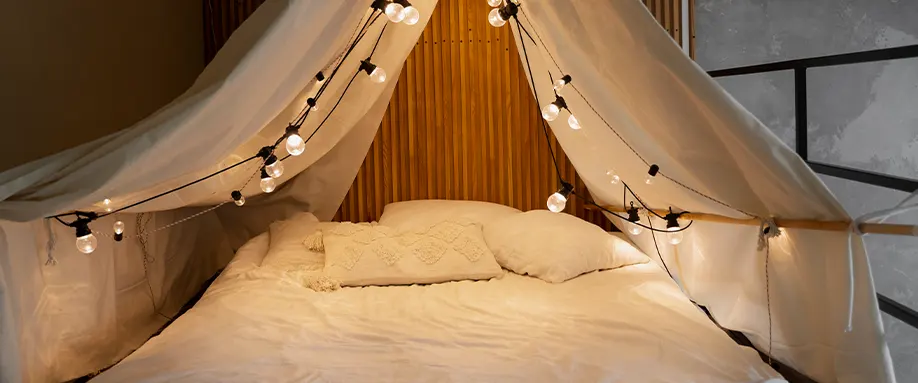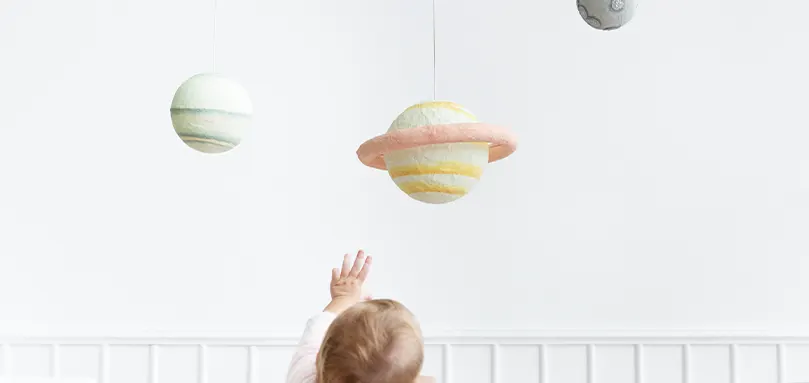The history of canopy bed frame
Back in the medieval ages, it was pretty much impossible to have your own bedroom – even for the wealthy.
Poor people shared their bedrooms because they had no other choice. The wealthy shared their rooms with servants to keep them at attention at all times. However, the wealthy also wanted some sense of privacy, which is where canopy beds came to be.
At first, a canopy bed frame was nothing more than a bed with a simple curtain stretched over it in order to create a sense of privacy, but also offer some form of insulation.
However, as the years went by, canopy beds became more intricate in their design at the request of the wealthy. Anne of Denmark, the wife of James VI and I was actually remembered through history for having one of the most head-turning canopy beds at the time. It was a crimson velvet and damask bed, ornated in the highest fashion at the time.
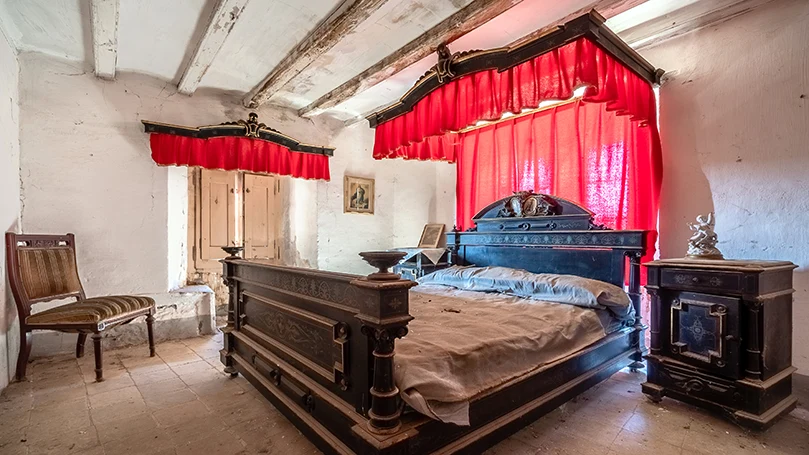
But England and Western Europe weren't the only home to a canopy bed frame. In pre-Republican, 19th and early-20th century China, a canopy bed was the most important piece of furniture inside of a house. They were intricately decorated with felicitous motifs of a long-lasting happy marital union, and of course, fertility.
Fast-forward to the mid-to-late 20th and 21st century, and canopy beds have evolved into several different style categories, touching on both traditional, Victorian-like aesthetic and modern-day, contemporary design.
Does every canopy bed come with curtains?
Not every canopy bed comes with a curtain.
Despite the curtain being one of the main details or elements of a canopy bed – it is not a defining one. As we'll see in just a few moments, there are many parts that make up a canopy bed. While some of them are a must-have, the others, like curtains and drapes, are not.

If you take a look at the traditional canopy beds, the ones from the Stuart period all the way to the Victorian era did always come with drapes. But as the years went by, priorities and aesthetics changed. Curtains of a canopy bed became somewhat optional.
However, that is not essentially a bad thing. In fact, getting a canopy without the curtains only leaves you with more decorative opportunities as you get to be the one to choose the curtains you want if you'd like them..
What are the parts of a canopy bed frame?
Modern canopy bed frames are either traditional or contemporary.
Traditional canopy beds are the ones we talked about earlier – ornate, highly-decorated ones, with great attention to detail. Those come with intricate, highly-detailed frames, head and footboards, bed posts, and of course, drapes.
Contemporary bed frames, like the ones you'd find at John Lewis, are usually much simpler in design, following a more minimalistic approach.
Despite the obvious style differences, what both of these have in common are essential elements or parts of a bed frame, and it is these parts that make up a canopy. At least some of them do,
Bed frame
A bed frame of a canopy is your typical bed frame used to support the mattress. It's made from either wood or metal.
The most common material used to craft a canopy bed frame has to be solid pine wood – a softwood most commonly used to manufacture beds of all types and styles.
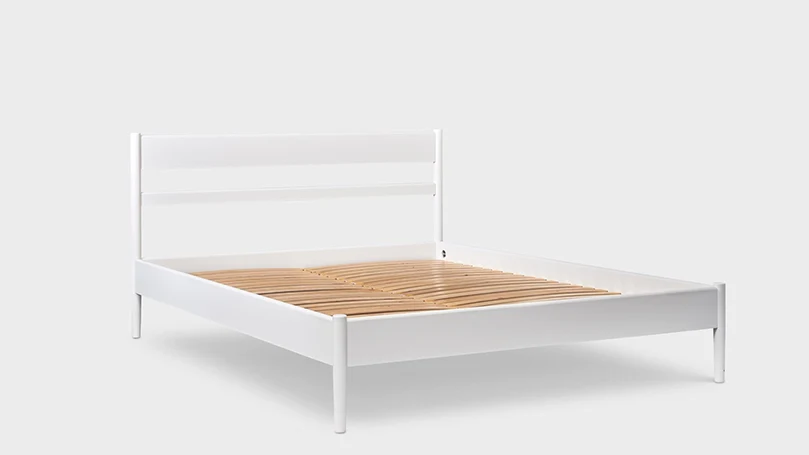
Bed posts
Bed posts are the defining element for a canopy bed. There can be either two, or four of them, depending on the style, and they're usually placed on either side of the headboard or the footboard.
A canopy bed, in the traditional sense, will come with four bed posts, protruding from each corner of the bed.
Bed rails
Bed rails are horizontally placed beams that connect the vertically placed bed posts. It is the bed rails and the bed posts that create a frame-like structure that defines what a canopy bed is.
Canopy
A canopy is a framed roof-like structure suspended over a bed by the bed posts and the bed rails. It is a defining namesake feature of a canopy bed.
A canopy can be closed or open, depending on the style of the bed, and it is not defined by the drapes or curtains.
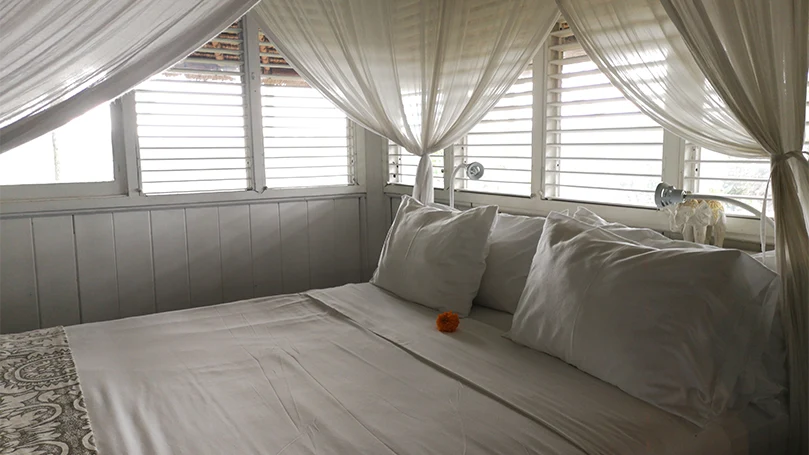
Caster
It is not common nowadays, but back in the 1800s, canopy beds came with wheels. These wheels were called casters.
Casters allowed people to easily move the bed around when it was time for cleaning.
Crown
A crown would be the top of a raised canopy. Back in the day, canopy beds would have the most intricate, detailed crowns with many accessories and features like carvings or shrooms.
The most popular canopy bed with a crown would have to be a polonaise or Lit à la polonaise – a small bed that was the centrepiece of 18th-century French furniture.
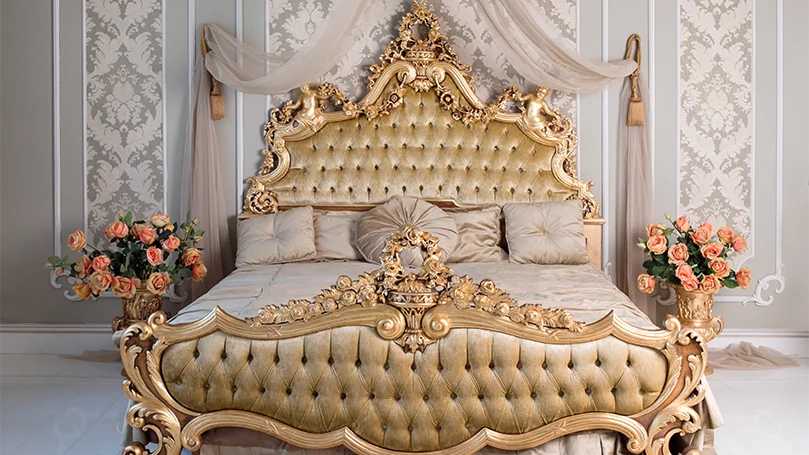
Finials
Finials are decorative end caps for bed posts, and for a long time, they were the most detailed stock features of a canopy bed.
Footboard
A floorboard is the portion of the bed that resides at your feet. Nowadays, footboards are optional, but in the early days of canopy beds, footboards were the home to the most intricate of carvings. They were the canvas of a canopy bed if you will – a place for the artist to sign its work.
Headboard
A headboard is a portion of the bed residing at the head of the bed. Just like the footboard, a headboard was a focal piece of a canopy, whether it was unholstered or simply carved.

Platform
A platform of a canopy is exactly as it sounds – a platform for a mattress to rest on. In the early days of canopy beds, the platform would also support box springs beside the mattress.
Side rails
Side rails are support rails that attach the headboard to the footboard. Rarely are they above the mattress level, so they're only there for the bed's structure, unlike safety side rails used for children.
Are canopy bed frames safe for babies?
Generally speaking, a canopy isn't the best option for a baby's bed. While they might look interesting, they can actually be quite harmful. Babies and small children tend to tug on things, and drapes of a canopy would be perfect for tugging, which could lead to potentially catastrophic outcomes.

Experts suggest that you should wait at least until your baby's a toddler before you introduce them to a canopy, and even then you should be careful.
While canopies with drapes can instil your little one with a sense of security, securing the drapes is absolutely vital if you plan on having a kid sleep in a canopy.
What is the difference between a canopy bed and a four-poster bed?
A canopy bed and a four-poster bed are terms often used interchangeably. However, they're not the same.
A four-poster bed comes with four bed posts. Those bed posts aren't attached to one another with bed rails, and for a poster bed to be a canopy – the posts have to be anchored to one another.
What are the benefits of canopy bed frames?
We've talked about the inspiration behind designing a canopy bed frame, and what's interesting is that the inspiration behind creating a canopy is actually what constitutes most of its benefits.

Improved aesthetics of the bedroom
If looks could kill, canopies would be in prison for a long time. If you raise want your bedroom's aesthetics to another level, a canopy is a great starting point. And, with so many styles to choose from nowadays, it would be virtually impossible not to have a canopy work correctly with your bedroom's appearance.
Privacy
Curtains surrounding the canopy create a sense of privacy that can't really be mimicked any other way. Even if you are all alone in your bedroom, having drapes and curtains enclosing your bed will double as your own little microcosmos where you'll feel safe and cosy.
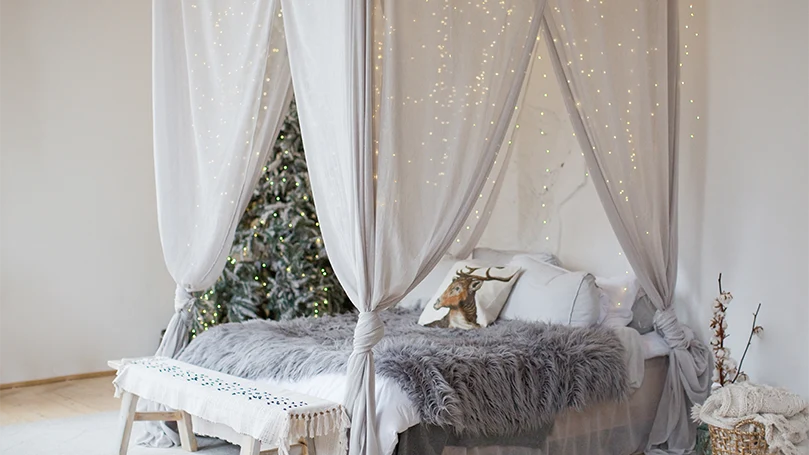
Temperature regulation
A canopy provides warmth to those who sleep in it, especially if the drapes are heavy. Closing the curtains will prevent cold air from seeping in during chilly winter nights, leaving you warm and comfy all night long.
Take into account that this will also mean toastier nights if you're a hot sleeper, so consider keeping the blinds open during summertime.
Can I put any type of mattress on the canopy bed frame?
What good is a fine bed frame if you can't use a good mattress with it? Fortunately, you don't have to worry about mattresses when it comes to canopies.
You don't have to shop around or search for ages to find a matching mattress. You can put any type of mattress on the canopy bed frame. From memory foam mattresses to pocket sprung ones – you won't be able to find a mattress that won't suit your new bed frame.

Once you find yourself one of the best UK mattresses, the only thing that's left to do is to dive into your basket full of dreams and have a full night of restful sleep on your new bed. You can check our guide here.

